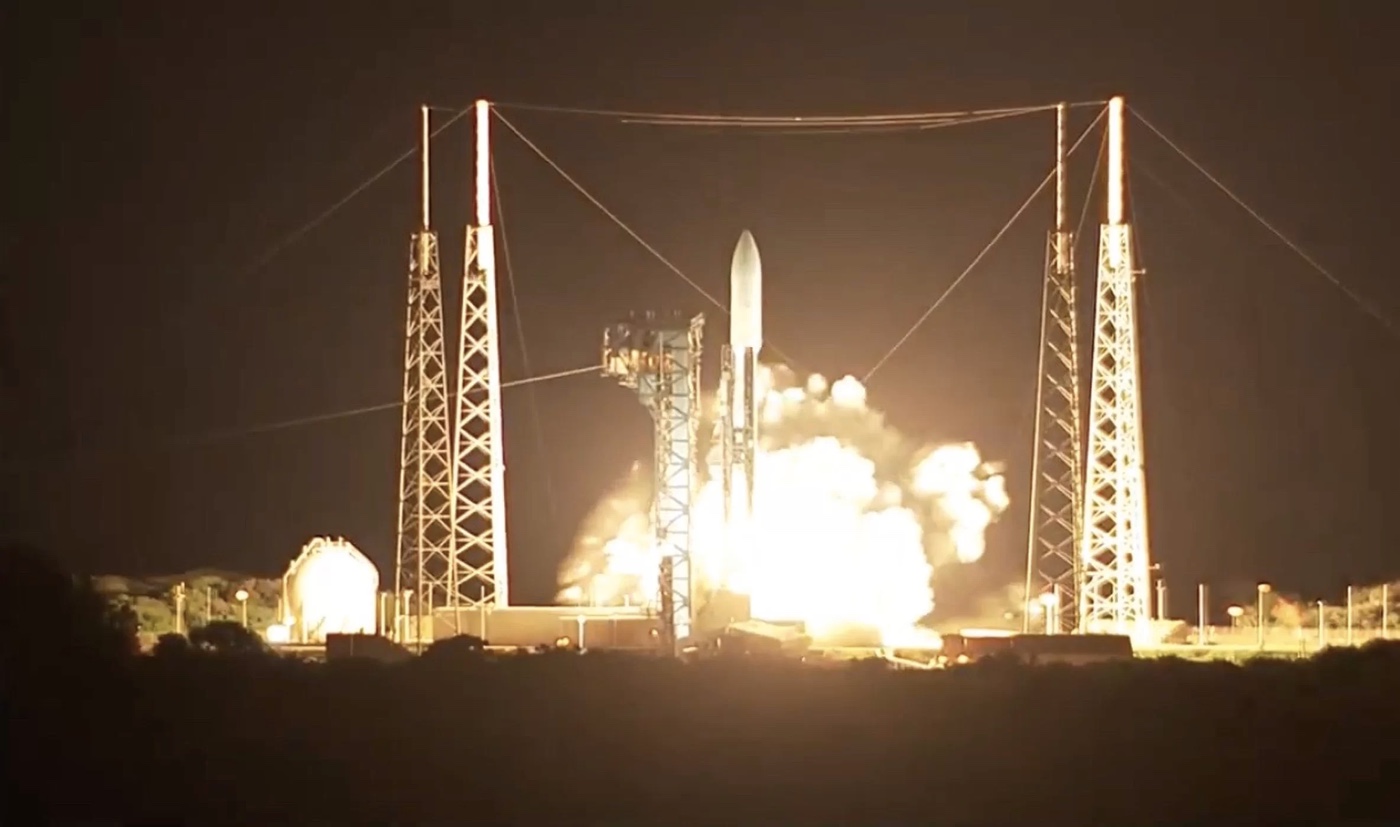Jam-Resistant US Military Communications Satellite Lifts Off in Midnight-Hour Launch
A United Launch Alliance (ULA) Atlas V rocket launched the satellite, known as Advanced Extremely High Frequency 4 (AEHF-4), at 12:15 a.m. EDT (0415 GMT) from a pad at Cape Canaveral Air Force Station. AEHF-4 is an advanced jam-resistant and nuclear-hardened satellite designed "to provide survivable, global, secure, protected and jam-resistant communications for high-priority military forces," according to a U.S. Air force mission description.
After a smooth liftoff, the Atlas V carrying AEHF-4 shed five strap-on boosters and placed the satellite in an initial orbit with its Centaur upper stage. If all goes well, the Centaur will deploy AEHF-4 in its final geostationary orbit about 22,300 miles (35,888 kilometers) above Earth about 3.5 hours after liftoff. [The Most Dangerous Space Weapons Ever]

"The mission of AEHF is to provide survivable protected communications for the military's high-priority assets on the ground, at sea and in the air," Maj. Matthew Getts of the Air Force's Space and Missile Center in Los Angeles said during commentary after the AEHF-4 launch. "It also enables the president of the United States and combatant commanders to control their tactical and strategic forces through all levels of war and all phases of conflict."
Built by Lockheed Martin, AEHF-4 is a $1.8 billion communications satellite designed to help replace the U.S. military's aging Milstar constellation. As its name suggests, AEHF-4 is the fourth satellite in the series, which will feature six spacecraft in all when complete. The first AEHF satellite launched in 2010.
"AEHF-4 that we just launched off the ground will complete the fully operational constellation for AEHF," Getts said. AEHF-5 is currently scheduled to launch in July of 2019, he added.
The U.S. Defense Department has several partners in the AEHF program. They include the military forces of the United Kingdom, the Netherlands and Canada. U.S. officials are also in negotiations with Australia's defense department for a potential partnership, Getts added.
Today's AEH-4 launch marked the 131st launch for ULA and its 50th launch for the Air Force. ULA's next mission will be the launch of the classified NROL-71 spy satellite for the U.S. National Reconnaissance Office.
Sign up for the Live Science daily newsletter now
Get the world’s most fascinating discoveries delivered straight to your inbox.
That mission will launch from California's Vandenberg Air Force Base later this year, ULA representatives said.
Email Tariq Malik at tmalik@space.com or follow him @tariqjmalik. Follow us @Spacedotcom and on Facebook. Original article on Space.com.

Tariq is the editor-in-chief of Live Science's sister site Space.com. He joined the team in 2001 as a staff writer, and later editor, focusing on human spaceflight, exploration and space science. Before joining Space.com, Tariq was a staff reporter for The Los Angeles Times, covering education and city beats in La Habra, Fullerton and Huntington Beach. He is also an Eagle Scout (yes, he has the Space Exploration merit badge) and went to Space Camp four times. He has journalism degrees from the University of Southern California and New York University.










